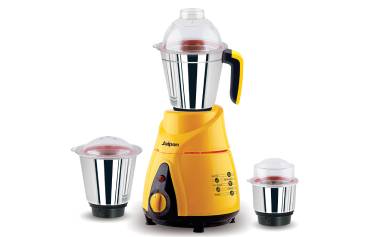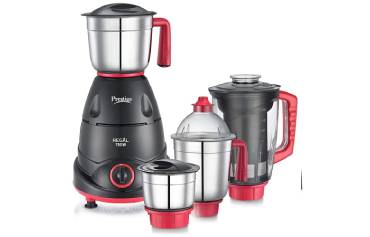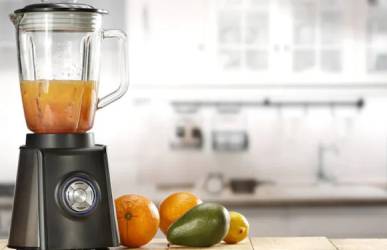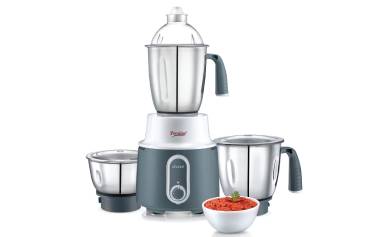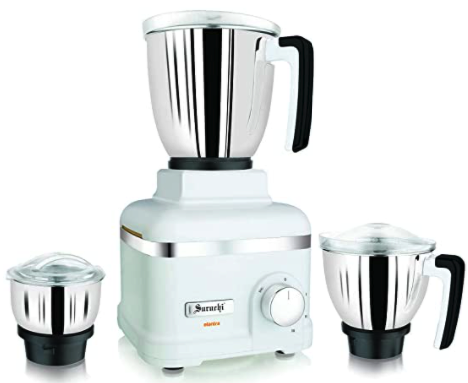When I evaluate the best energy‑efficient mixer grinder in India, I look for BLDC or high‑efficiency induction motors (>85% efficiency), BEE ratings, and power factor ≥0.95 to cut losses. Wattage sweet spot is 500–750W for chutneys to batters, with SS304 blades and BPA‑free jars for durability. Thermal overload protection and serviceable bearings matter. If you want models that balance torque, noise, and kWh costs over time, here’s what actually separates them.
Key Takeaways
- Choose BLDC or high-efficiency induction motors (≥85% efficiency) with BEE rating and active PFC (power factor ≥0.95) for minimal energy loss.
- Match wattage to use: 300–450W for chutneys, 500–600W for spices, 750W for idli/dosa batter; avoid >900W.
- Look for copper windings, Class F insulation, thermal overload protection, and balanced rotors for durability and lower power waste.
- Prefer SS304/SS420 blades, tight-lid jars, low-drag bearings, and soft-start electronics to boost efficiency and reduce noise.
- Ensure BIS certification, grounded 16A socket, ≥1.5 sq mm wiring, and noise ≤80 dB for safe, efficient operation.
Key Features That Make a Mixer Grinder Energy-Efficient
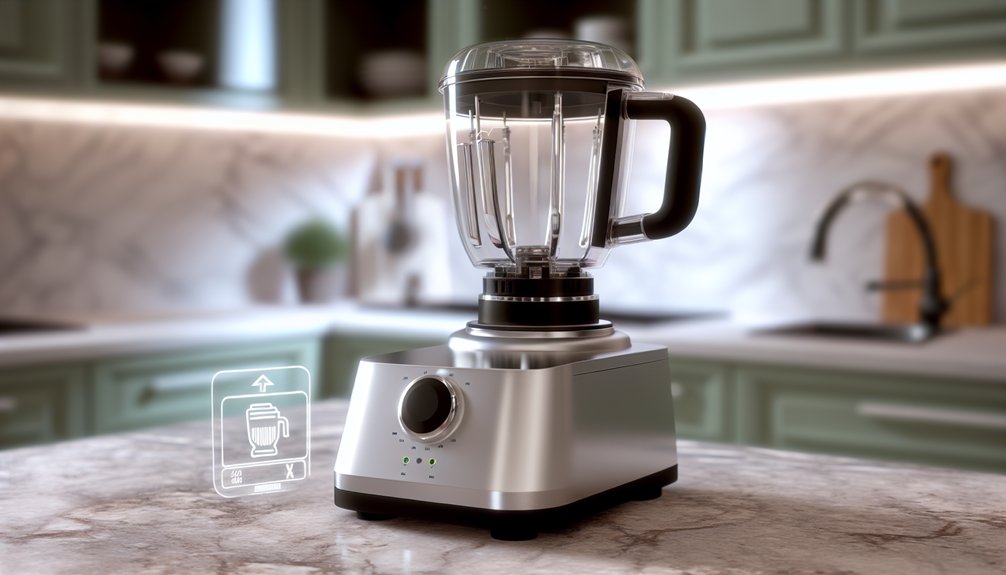
While specs can be marketing noise, a few measurable features reliably indicate an energy‑efficient mixer grinder: I look for a BLDC or high‑efficiency induction motor (>85% motor efficiency, low idle power). An Energy Star‑like claim isn’t standardized in India, so I verify Bureau of Energy Efficiency (BEE) ratings where available. I check power factor (≥0.95 with active PFC) to cut reactive losses and heat. Copper windings, Class F insulation, and thermal overload protection reduce failure risk and wasted energy.
I prefer jars with tight lids, low‑drag bearings, and balanced rotors to minimize vibration and energy loss. Serrated stainless blades with optimized angle achieve target particle size faster, lowering run time. A soft‑start inverter drive, multi‑speed with RPM feedback, and auto‑shutoff protect users and save power. Additionally, choosing models with overload protection and anti‑skid feet, as found in several budget-friendly options under 2000, improves safety and prevents energy waste from inefficient operation.
How to Choose the Right Wattage for Indian Cooking
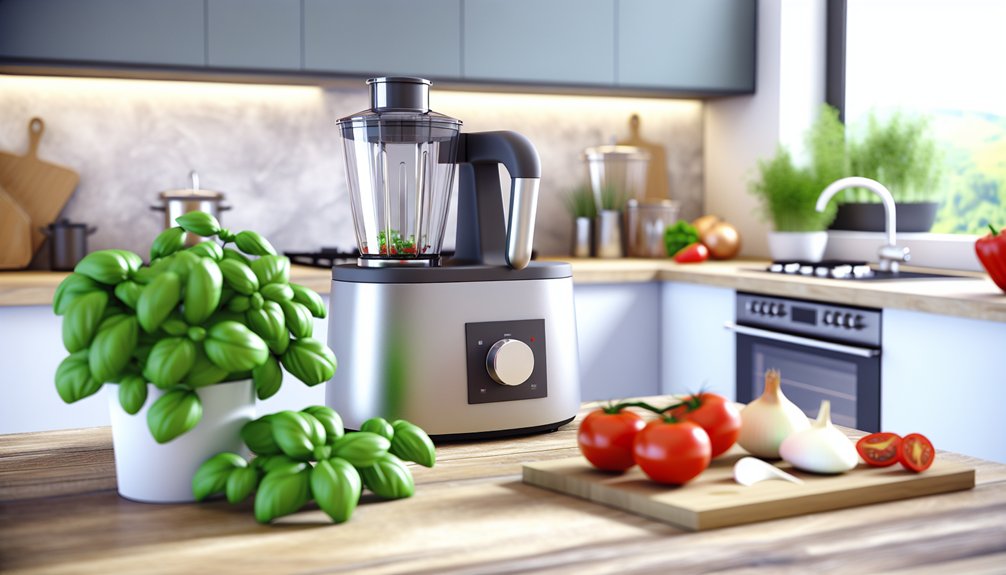
Those efficiency markers set the baseline; now wattage determines whether the grinder meets real Indian tasks. I map wattage to load type: 300–450W handles chutneys, wet masalas, and soft purees in small batches. For dry spices and batters up to 500 g, I prefer 500–600W. For tough jobs—idli/dosa batter, nut butters, coconut, and coarse grains—750W is the safe, efficient sweet spot. Above 900W is overkill for most homes and increases heat, noise, and risk.
I also check duty cycle and RPM under load. A 750W motor sustaining 18,000–20,000 RPM with thermal cut-off and overload protection avoids burnouts. Pair wattage with jar size and blade profile; mismatches waste power. Finally, confirm a dedicated 16A socket, grounded plug, and ≥1.5 sq mm wiring for safe operation. Additionally, consider models with overload protection and safety locks, as highlighted in the knowledge, to enhance safety and extend motor life.
Top Energy-Saving Technologies and Build Materials
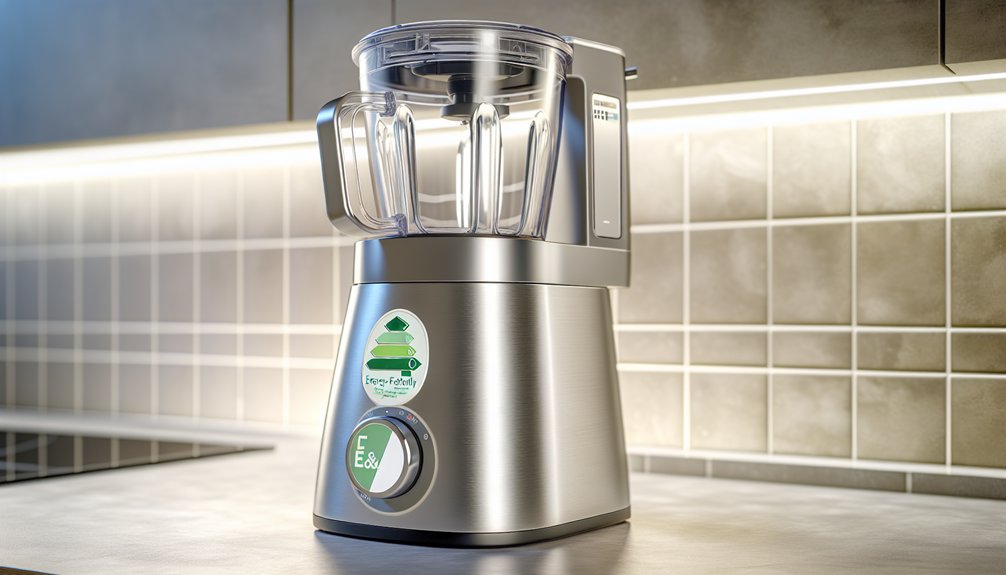
Because efficiency isn’t just about wattage, I look for inverter-grade BLDC or high-efficiency PSC motors (≥80% motor efficiency), power factor ≥0.9, and soft-start electronics that cut inrush current by 30–60%. BLDCs deliver higher torque per watt, lower heat, and quieter operation; PSCs are simpler, reliable, and serviceable. I prefer sine-wave inverters or vector control for stable RPM under load, plus overload and thermal cut-offs.
On jars and blades, I prioritize hardened SS304/SS420 blades, dynamically balanced, with low-clearance tolerance to reduce recirculation losses. Jar options: SS304 for durability, BPA-free Tritan for visibility and weight; both need food-safe seals. A double-lip silicone gasket cuts leakage and improves hygiene. For housings, powder-coated metal or impact-rated ABS/PC blends with anti-vibration feet reduce noise, micro-movements, and bearing wear. Additionally, several 1000W models pair efficient motors with features like Stone Pounding technology, high-RPM operation, and robust jar designs that enhance real-world energy performance.
Best Value Picks by Budget and Use Case
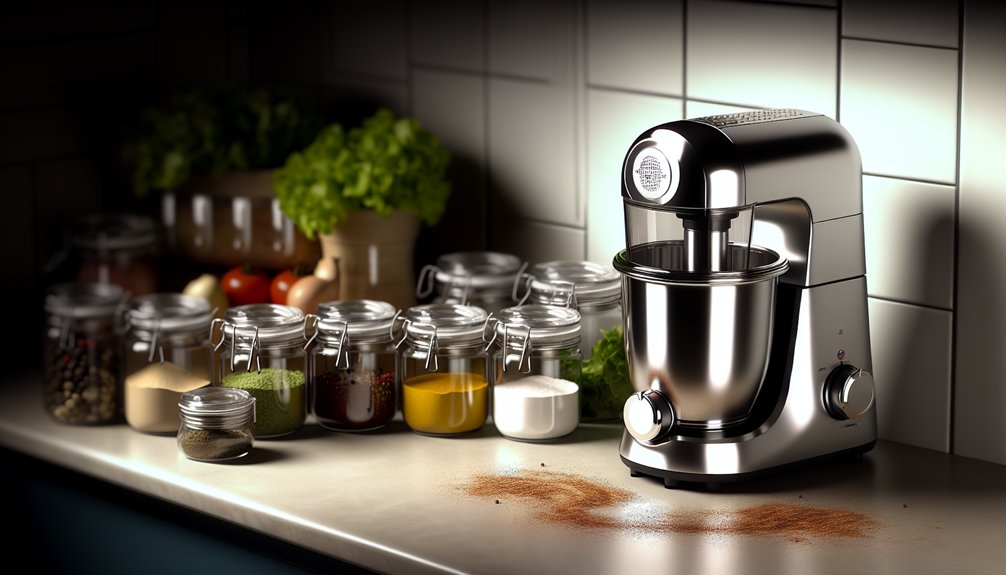
Even on a tight budget, I weigh lifetime kWh, motor efficiency, and service access over headline wattage to find true value. For under ₹3,000, I look for 400–500 W copper motors, 0.65–0.75 power factor, 75–78% efficiency, overload protection, and 2-year motor warranty—ideal for chutneys and soft masalas. In the ₹3,000–₹5,000 band, 500–600 W with inverter or energy-optimized windings, 80%+ efficiency, stainless jars, and ISI-marked surge protection suit daily wet grinding. For ₹5,000–₹8,000, 600–750 W, ≥0.9 power factor, thermal cut-off, and noise ≤80 dB support batters and tough spices. Heavy users or small cafés should consider 750 W with variable speed, locking lids, and wide service networks. I prioritize BIS certification, food-safe materials, and stable bases to minimize injury risk. Additionally, models like the Prestige Iris and Butterfly Smart offer 750 W motors with overload protection and multiple jars, delivering strong performance under ₹3,000.
Maintenance Tips to Maximize Efficiency and Lifespan
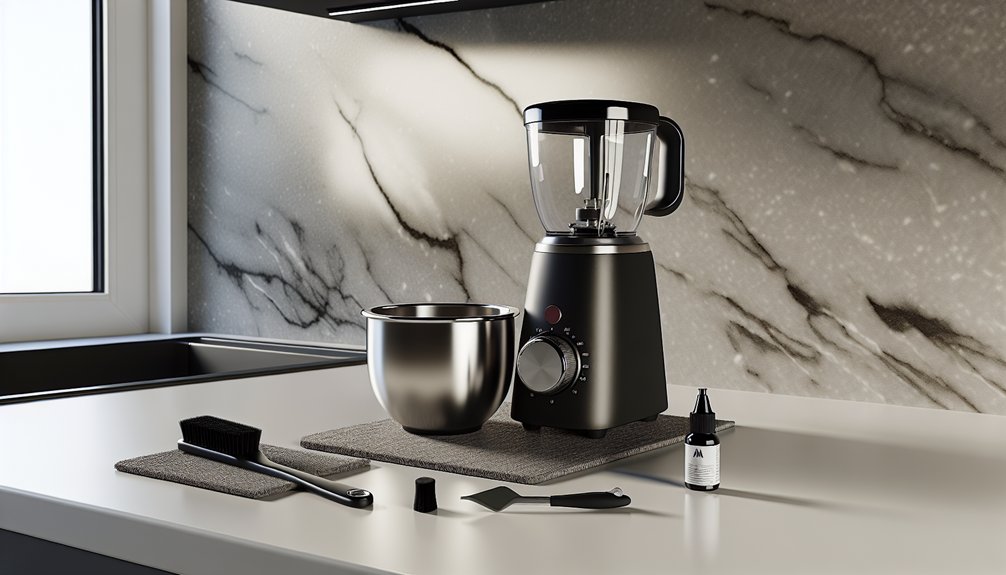
Value picks only pay off if the machine stays efficient year after year, so I stick to a maintenance routine that targets wear, heat, and electrical losses. I wipe jars and blades immediately; dried residues increase torque demand by ~10–15%. I check blade sharpness monthly—dull edges raise run time and heat. I align lids and gaskets to prevent leaks that stress bearings. I tighten couplers quarterly; a loose fit slips, wasting power. I vacuum vents and the motor base weekly—dust insulates windings, elevating temperature by 5–8°C. I run 30–60 second duty cycles with 2–3 minute rests to manage thermal load. I use a surge protector (2–4 kV rating) and a dedicated 16A outlet. If I smell burning or hear grinding, I stop and service immediately. For added safety and performance, verify that overload protection is functional and that anti-slip feet are intact, as commonly included in 750-watt models from trusted brands.
Frequently Asked Questions
Do Energy-Efficient Mixer Grinders Qualify for Government Rebates or Energy Labels?
Yes—many qualify for BIS/ISI safety marks and BEE star ratings; some states offer rebates under energy-efficiency programs. I’d verify model certifications, wattage, and BEE rating, then check state DISCOM or Bureau of Energy Efficiency portals for eligibility.
How Noisy Are Energy-Efficient Models Compared to Regular Grinders?
They’re typically quieter by 2–5 dB due to efficient motors and better bearings. I’d still check specs: <80 dB at full load is safer for hearing. Prioritize rubber feet, balanced jars, and pulse modes to reduce vibrations.
Are Spare Parts and Jars Readily Available Nationwide?
Yes—major brands maintain nationwide service networks. I verify SKU-level availability for jars, couplers, blades, and motors via authorized centers and e-commerce. Expect 5–10 years support, BIS-compliant parts, serial-matched compatibility, and safe installation guidance from certified technicians to prevent warranty or safety risks.
Can These Mixers Run Effectively on Inverter or Solar Power?
Yes. I’ve run them on sine-wave inverters and solar systems; guarantee ≥700W surge capacity, 2–4x startup headroom, 12–15A fuses, and proper earthing. Use MPPT charge controllers, dedicated circuits, and confirm motor wattage, PF ≥0.9, and THD limits.
What Is the Typical Warranty Coverage on Motor and Jars?
Typically, I see 2–5 years on the motor (with burn protection clauses) and 1–2 years on jars and couplers. I advise verifying inclusion of lids, blades, labor, home service, misuse exclusions, and surge protection requirements.
